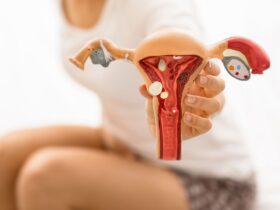Don't miss our updates



Thanks to technology and research in reproductive health issues, currently having a pregnancy with HIV is possible. Nowadays, people affected by the Human Immunodeficiency Virus (HIV) can have a better quality of life and even have a child of their own without risk of contagion. This is possible through Assisted Reproduction treatments such as Artificial Insemination or In Vitro Fertilization if a couple wishes to achieve pregnancy and have a baby without HIV. In this article, we explain these options. Pregnancy with HIV through Assisted Reproduction Some couples who want to have a baby and in which only one member is HIV positive can do so through different Assisted Reproduction procedures. Artificial Insemination allows a serodiscordant couple (a couple is serodiscordant when one of its members has HIV and the other does not) to achieve a pregnancy without having physical contact through sexual relations, which prevents contagion from one to another. This technique is recommended for couples who are under 35 years of age, who have not been diagnosed with previous fertility problems, and when the man’s seminal quality is adequate. In Vitro Fertilization, when is it recommended to achieve a pregnancy with HIV? On the other hand, in case there is a situation of infertility in any of the members or if the man is an HIV carrier, In Vitro Fertilization is the ideal technique to conceive a pregnancy. It is important to mention that HIV is not found in sperm but in seminal plasma, which is the mixture of fluids that make up semen. Therefore, semen washing can be performed in Assisted Reproduction laboratories to isolate the sperm. Once the sperm are separated, it is necessary to analyze a small amount of them using a test called PCR, to determine that HIV is not present; subsequently, the sperm are frozen and stored for later use. At the same time that this procedure is carried out, the woman seeking to become pregnant performs ovarian stimulation and, subsequently, the puncture to obtain the most appropriate eggs and perform In Vitro Fertilization with the sperm that were previously stored in the laboratory. Pregnancy of a woman with HIV Whether pregnancy is achieved through Assisted Reproduction or spontaneously, if the woman is a carrier of the virus, she must undergo constant check-ups to monitor her health and that of her future baby. In certain cases the period of time may vary, in accordance with what the Maternal-Fetal specialist doctor recommends; However, in many cases, serological controls (identification of specific antibodies in the blood) of the pregnant mother must be carried out every 3 months to confirm that the viral load remains undetectable and the possibility of transmitting HIV to the baby is reduced to a minimum. With adequate treatment and serological control, it is possible that the risk of vertical or perinatal transmission (transfer of HIV from an HIV-positive mother to her child during pregnancy, childbirth, or breastfeeding), which can occur from the mother to her baby, can be reduced. practically zero. In addition, the placenta acts as a protective barrier for HIV particles. However, the mother should take particular care of her diet and keep herself protected with a condom when having sexual relations during pregnancy, since any infection or loss of defenses can result in complications. Always remember to consult your specialist doctor Finally, it is important to emphasize that each case is different, and in a pregnancy with HIV its treatment, medication, and monitoring may vary, according to the particular characteristics of the patients and their life history. Therefore, it is important to consult with a fertility doctor to make an accurate diagnosis of the reproductive situation of the person who has HIV and wants to get pregnant, as well as their partner (if they have one), who has the knowledge and experience necessary to provide the most appropriate solution with the lowest risk of contagion.

Endometriosis is a common problem among women of reproductive age (15 to 44 years old, according to the WHO), ranking third among the most frequent gynecological problems. This condition consists of the presence of endometrial tissue outside the uterus. The most frequent sites where this tissue tends to develop are: It is important to emphasize that each case is different. While some women with complicated cases of endometriosis show no symptoms, others with mild endometriosis may experience very intense pain, which is characteristic of this condition. Endometriosis: A Common Problem That Affects Women’s Fertility Endometriosis is a much more common problem than many people think. It affects 10 to 15% of women of childbearing age, from the onset of menstruation until after menopause, and in 30 to 40% of these cases, women have difficulty having a baby. Ver esta publicación en Instagram Una publicación compartida por Ingenes Institute (@ingenesinstitute) When does this disease occur? Endometriosis is a problem exclusive to the reproductive age, as it is directly related to the growth of endometrial tissue stimulated by hormones during the menstrual cycle. It begins with the first menstruation and is a progressive disease. Sometimes it is not detected during puberty until later in life. Factors that increase your likelihood of having endometriosis The risk factors related to endometriosis are as follows: What are the most frequent symptoms? The main symptom of endometriosis is intense pain during menstruation, which begins prior to the menstrual flow, increases until it becomes intense during heavy flow, and begins to decrease until it disappears with the cessation of menstruation. This pain is characterized by being progressive and disabling as age advances. In addition to pelvic pain, other symptoms may occur, such as: In extreme cases, there may also be pain when urinating. It is very important to emphasize that each case is different, while some women with complicated cases of endometriosis show no symptoms, others with mild endometriosis may experience very intense pain, characteristic of this condition. How is it diagnosed? The diagnosis can be made with the help of a gynecologist by means of an interrogation aimed at identifying intense, progressive, and disabling pelvic pain. Other findings suggestive of endometriosis are the presence of a retroverted uterus, decreased uterine mobility, pain on mobilization of the cervix, and in the pelvic area. The definitive diagnosis is made by laparoscopic surgery by directly visualizing the lesions and appearance of endometrial tissue outside the uterus, and by analyzing such tissue by experts in certified laboratories. What are the causes? Today, there is no clear evidence regarding the precise causes of endometriosis, and there are theories attempting to explain the main reason for this condition. One of these theories considers that retrograde menstrual flow is the cause. This occurs when menstrual blood flows backwards through the fallopian tubes until it reaches the pelvic cavity, instead of leaving the body through the cervix and vagina. This causes endometrial tissue to adhere and grow in places where it should not. Another possible cause may be heredity. If any woman in your family has suffered from endometriosis, there is a higher probability that you may also suffer from it. @ingenesinstitute “Arleth will know everything we did for her to arrive, she is the love of my life." – Claudia’s #infertilityjourney. 👩🏻🍼💕 #infertility #ivf #fertility #fertilityjourney #ttc #ttcjourney ♬ Valentine's Day-friendly piano and music box(1178765) – zomap What is the treatment? The treatment consists of removing the endometrial tissue that is growing outside the uterus through laparoscopic surgery, with the subsequent use of hormonal medications on an ongoing basis to cause this tissue to atrophy, in addition to other medications. However, it is very important to mention that this is not a definitive treatment and that currently there is none, since the tissue will appear again when the hormones that stimulate it make their appearance as each menstrual cycle. What are the implications of endometriosis if I am not yet a mother? Endometriosis is associated with infertility due to adhesions or tissue that forms in the pelvic cavity distorting the position of the uterus, altering the mobility and function of the tubes, and physically blocking ovulation. In addition, the presence of endometriosis in the ovaries can damage their tissue and cause a low egg reserve and decreased ovulation quality. Can I have a baby if I suffer from endometriosis? The answer is yes. To have a baby if you suffer from endometriosis, it is very important to have a diagnosis from a fertility specialist. This way, you will have a professional opinion and get personalized recommendations according to your case to become a mother as you imagine it. At INGENES, we have more than 80 gynecologists and fertility specialists ready to answer any questions you may have, help you, and accompany you in every part of your process until you have your baby in your arms. Tell us your story here and start your journey now!